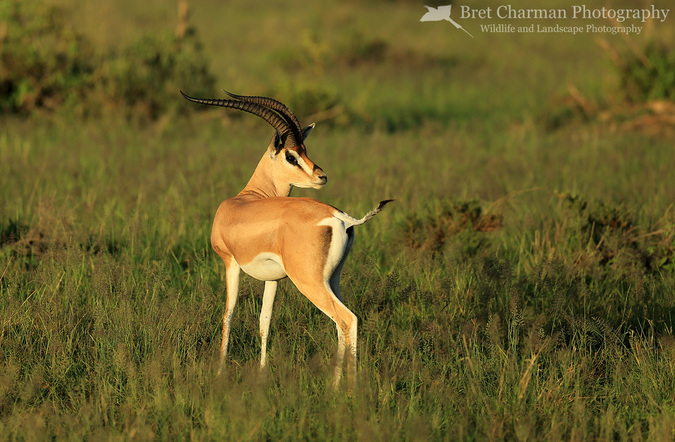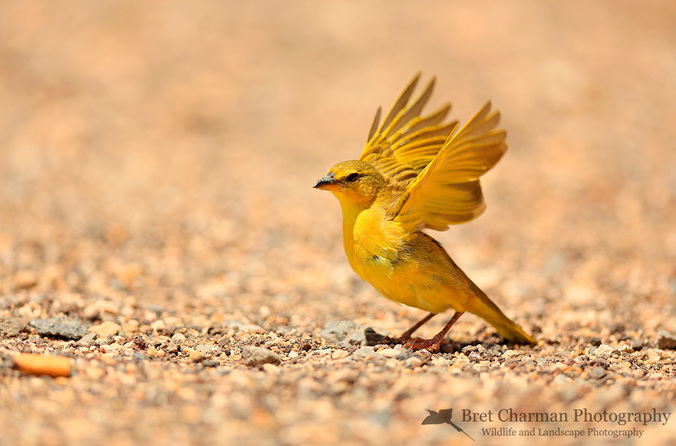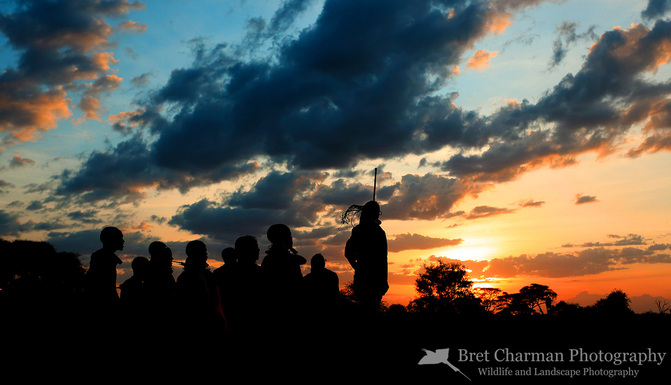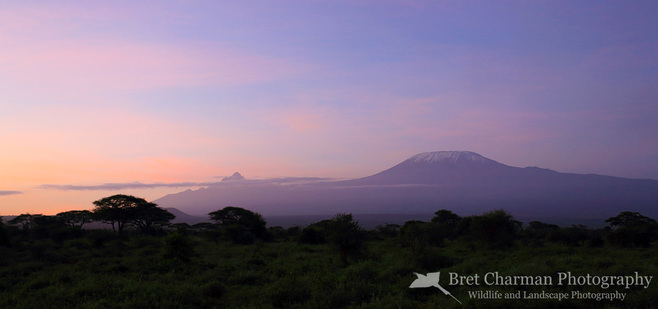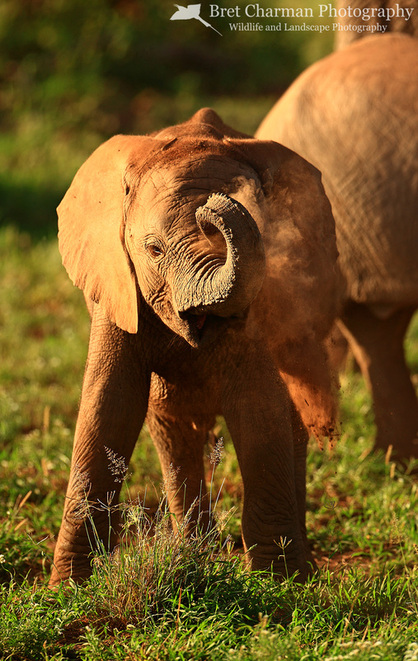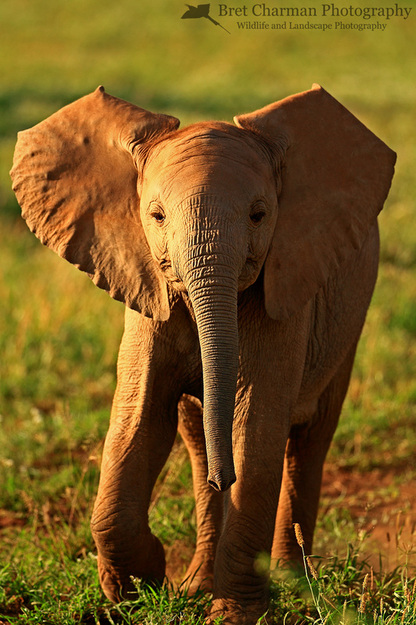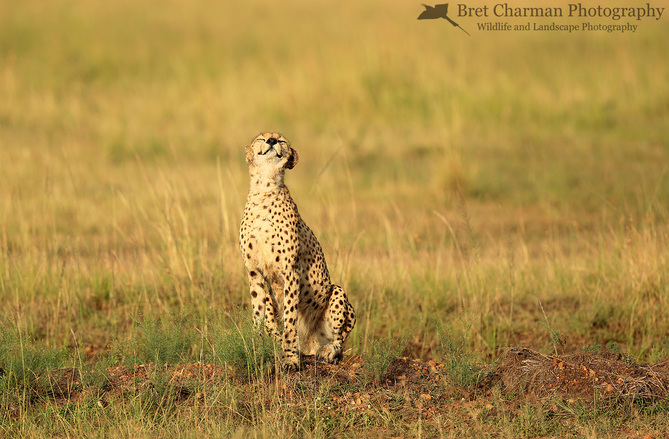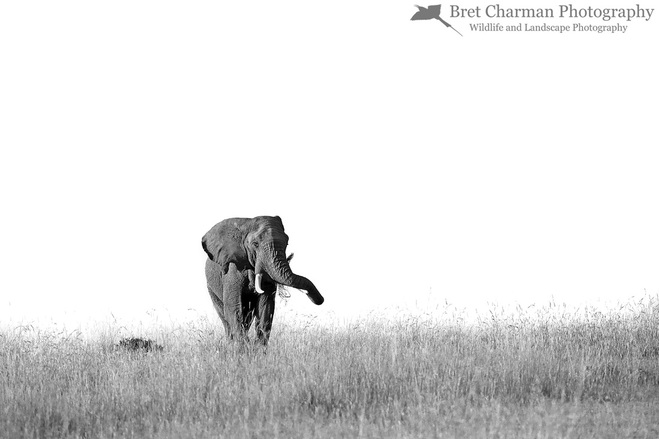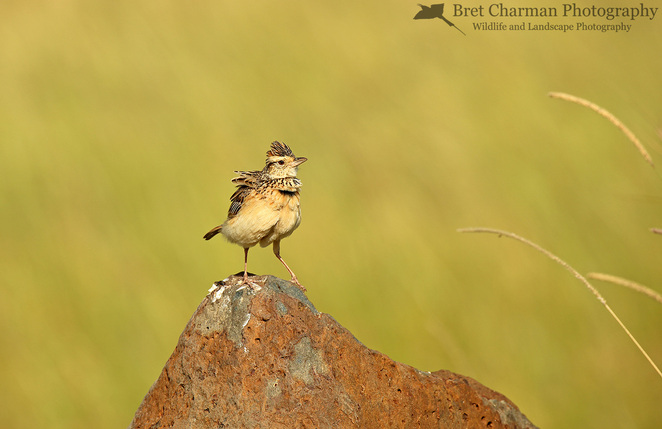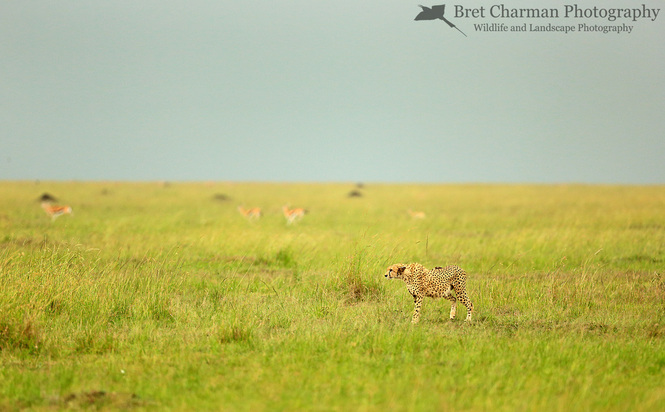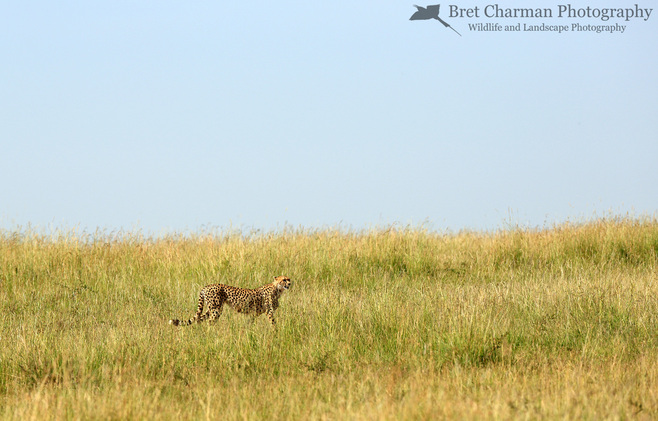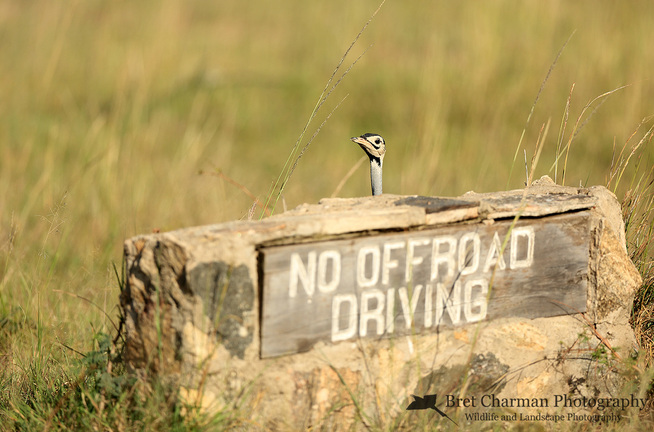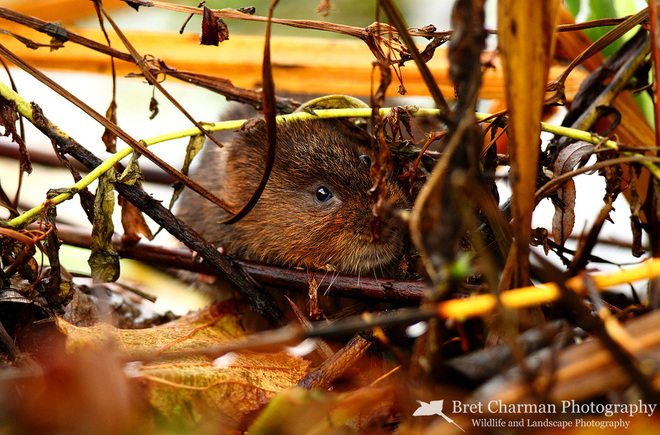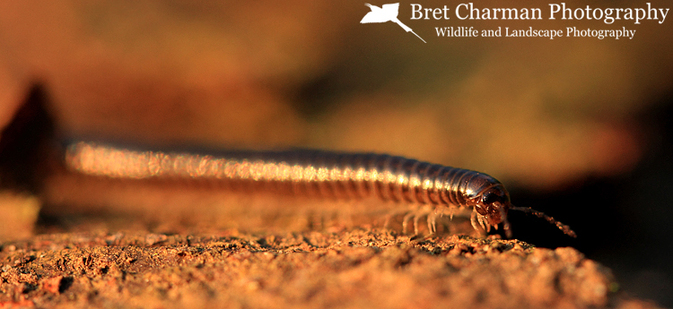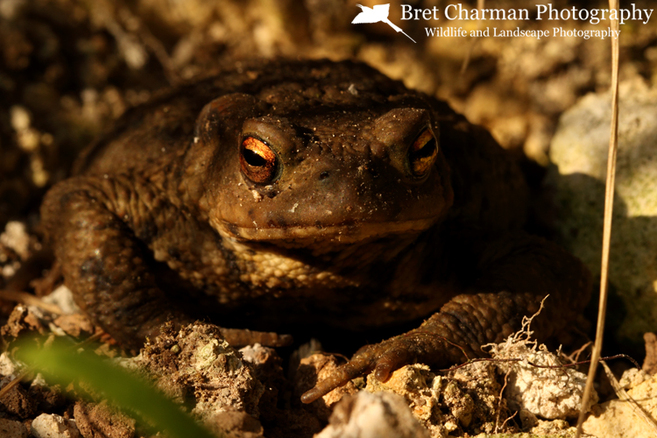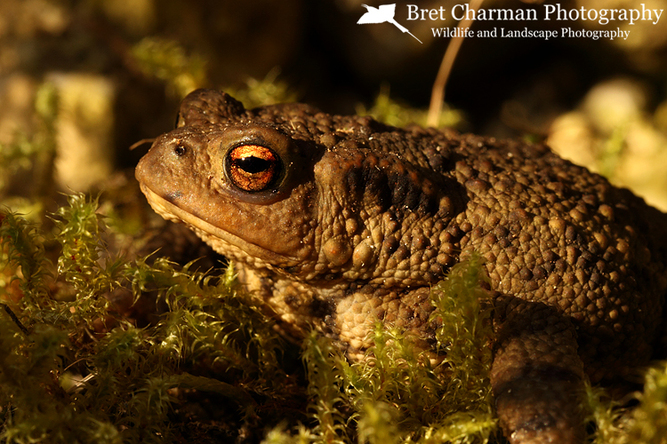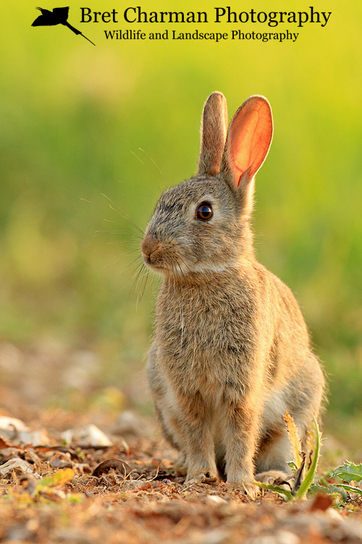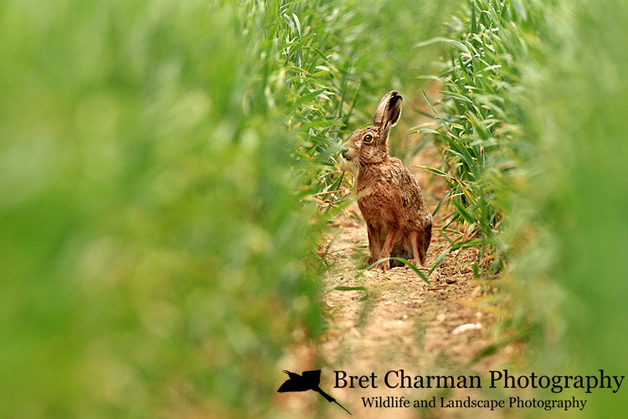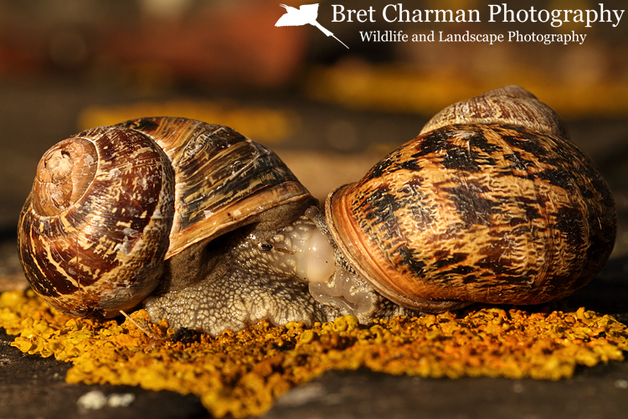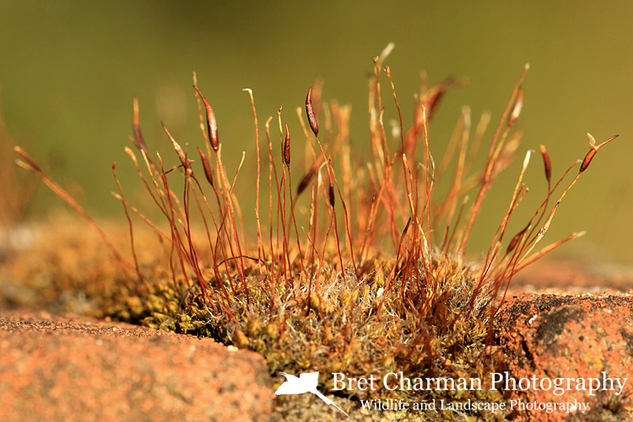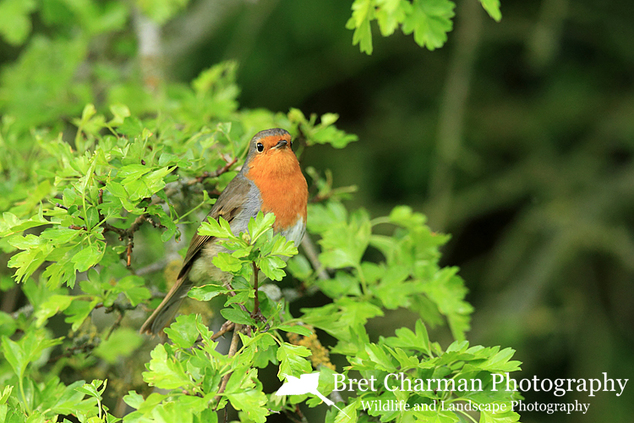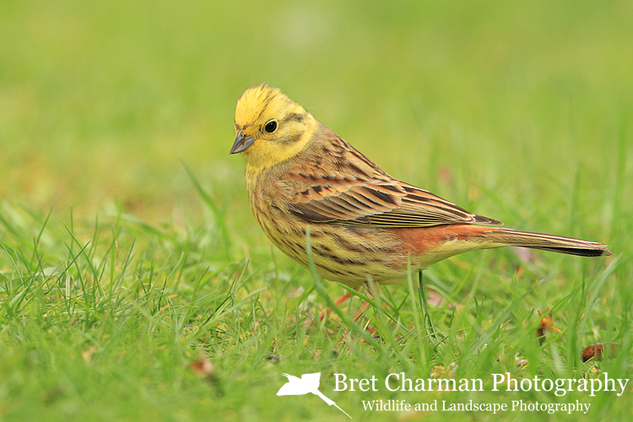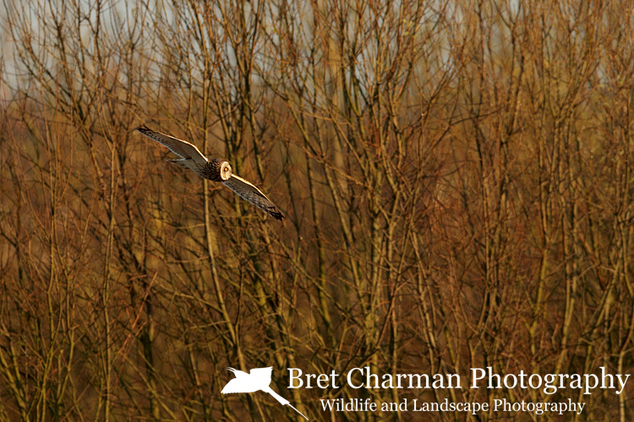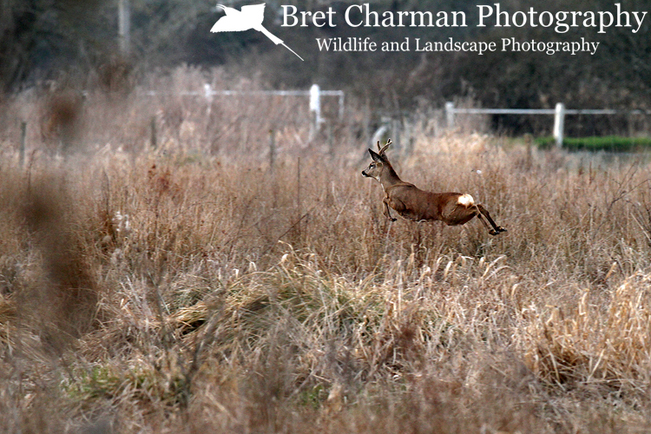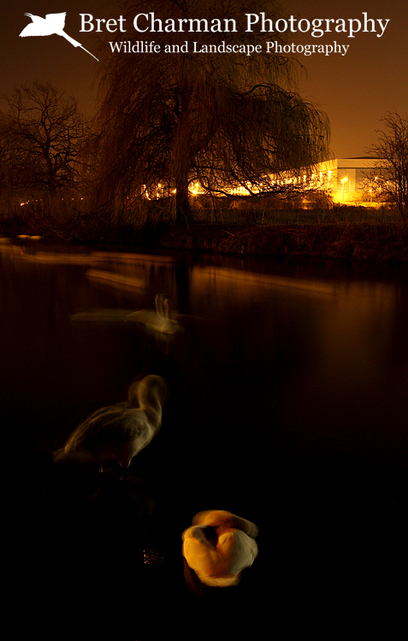|
So this was to be our last day out in the vehicles, going in search of game and trying to get some unique wildlife images. We hadn't yet come across a "Big Tusker", of course we had seen some Elephants with big tusks but none that really made your jaw drop. That was one thing we were hoping for a we left for our all day drive out into the park, anything else we saw would just be a bonus. A few of us also wanted to head back to the vast dry expanse of Lake Amboseli and get some more images of this spectacular landscape. As we entered the park, there was a group of bull Elephants strutting their stuff and pushing one another about. Kicking up all the dust in the warm morning light made for some exciting scenes, even if they were a little tricky to photograph. The dust was just as bad when it was kicked up by the vehicles, meaning visibility on the roads at times was interesting. As well as the grumpy Elephants and the very fine dust that seemed to coat everything, there were some beautiful Grant's Gazelle posing nicely in the warm light. After the dusty start to the day we headed towards the open plains, to try and get some shots of the Elephant herds as they crossed to get to the remaining water. We timed it just right, as family groups appeared out of the woodland and placing our vehicles in the right places, we got some lovely family shots. The really big tuskers were still keeping a low profile but some of the individuals still had sizeable tusks and posed nicely for us in the morning light. I really could watch Elephants all day, especially when they are in their family groups and you can see the relationships and their interactions. You quickly realise that Elephants and Man have very similar social structures, and the way they interact is really rather fascinating. Each Elephant has its own distinct appearance and a very distinct personality. We spent a little time watching and photographing some excitable Zebra as they careered around the dusty edge of the woodland. Lots of the stallions were really aggressive towards one another with kicks and repeated biting common place. Unfortunately for me, most of these were jsut too far away to successfully photograph. We then headed to a lone hill right by the edge of Lake Amboseli, there was still a little water here and there providing a lifeline to a few stranded Hippopotamus. We came here for our lunch and to enjoy the epic landscape of the beautiful National Park. We came across a big bull Buffalo who was completely caked in mud, and he posed nicely for us before we moved to the base of the hill. The next challenge was climbing the hill with the large cool boxes and keeping the camera in hand. I am mighty glad I took the camera too as there were some incredibly tame small birds, who posed perfectly all around. They would literally come with inly a few centimetres, desperate to pick up any scraps of bread, meaning the were more or less the perfect subjects (from a selfish photography point of view). After our pleasant packed lunch at the top of the hill, with the spectacular views (as seen in the panormaic above), it was time to head back out into this vast, open landscape. A few of us wanted to head back to the dry expanse of Lake Amboseli and others wanted to search for the, so far, elusive big tuskers. It was the "Three Musketeers" together again as Andrew, Richard and I headed off to the lake to get some film footage and yet more photographs. We cam across quite an amazing sight as we saw a huge family of Ostrich, how the parents managed to raise as many chicks as they did is really quite remarkable. We went onto the dried out lake and got the shots we wanted, the sandy soil providing great contrast to that of the deep blue sky. I also photographed Andrew & Richard doing their thing as they documented this spectacular place (I'll send you the high-res shots of you guys!) and then we headed off to join the others in the swampy plains. We had heard that our other vehicles had come across a big tusker, at last! Admittedly, we had seen it at a distance earlier on in the day but we could not get close enough for any photography. We made our way to the spot where our group was with the Elephant and when we got there we realised we had struck gold. This Elephant didn't have big tusks at all ... it had a magnificent pair of tusks, they were enormous! We later found out this Elephant is known as Tim and is over 40 years old, what a great giant he was and what a privilege it was to be able to spend the hour or so we did watching and photograping him. He was actually quite difficult to photograph due to his huge size but it was one of those sightings that I will never forget. Many of you, I am sure, will have heard of Nick Brandt and his absolutely stunning photography. Well I have long been an admirer and one day I hope to produce a portfolio as awe inspiring as his. His photography is an art form, he really knows how to use every tool in the photography arsenal and boy does he blow people away with the results he achieves. Anyway, Amboseli NP is one of the places where he managed to take some of his stunning images and I really wanted to capture an image in his style. They need to be in monochrome to start with and they just have a certain tonal quality to them. Now I am not saying that the image below is in the same league, merely this was a photograph that was inspired by the great man himself. And you know what, it isn't often I say this but I am dead chuffed with it! After a long hot day, out in what has to be one of Africa's most picturesque National Parks, it was time to head back to our camp for the last time. It is always a sad time knowing that the end is nearly upon you, but you can reflect back on the last few days and remember all the magnificent sightings we were privileged enough to enjoy. There were a couple more photography feasts to come though, and one was a traditonal dance by the local Maasai warriors as well as some of the women too! I honestly can't describe what an amazing experience it is to witness an authentic performance like this. Just to top it off the setting sun provided the perfect back drop for some silhouetted shots. It really was a completely surreal evening and again (sorry for keeping on saying this) but it was a photography session I will never forget. Some of my fellow tour participants joined in towards the end but alas, with my injured toe I was unable to get involved. Oh well, at least I got to take some of, what I think are, the best images from this fantastic trip! A massive thank you to all the Wild Eye staff (including Andrew and Gerry), as well as all the Maasai involved in the evening. Thanks must go to all the guides for their continued patience and skill in driving the Land Cruisers, as usual the vehicles were always driven with absolute precision and they did everything they could for us.
Another great day in the wilds of Africa with the Wild Eye team and there is still one more blog entry to come. Don't worry though, unlike this Leviathan the final post will be short but sweet!
0 Comments
Today was going to be our first day in the spectacular Amboseli NP, and as soon as we had woken up the spectacular Mt Kilimanjaro towered above us. I honestly can't describe just how amazing this location was, photographs really cannot do it justice and I can only recommend you go there and see it for yourself. So after waking up in this truly spectacular landscape, it was time to head out into Amboseli for the first time. The park entrance was incredibly tidy and extremely formal, especially when compared to that of the Maasai Mara. Amboseli is famed for its Elephant population and it wasn't long before we sighted our first herd. It was immediately clear this herd was much larger than those we had seen in the Mara and the warm, morning light was perfect for some photography. There was a really cheeky youngster who was showing off for us and we were happy to take some nice portraits. We also had the opportunity to photograph a few different species of bird as we moved from different groups of the extened herd of Elephants. We moved on towards the plains of Amboseli heading towards Lake Amboseli. This lake remains dry for much of the year but the surrounding landscape provides grazing for the Elephants and a large number of other plains game. There are big cats here too but they not seen as easily as they are in the Mara. We weren't really here for the big cats though, the Elephants were our real focus for the day. After lunch we decided to head towards Lake Amboseli and see if we could get some Elephants walking across the dusty expanse, with the big skies providing a dramatic backdrop. Gerry set us a mini photographic challenge, to go out with an aim to capture a small portfolio of images, each image fitting into its own category. Things didn't all go to plan with this though, we got a little distracted about half way through the drive as we travelled across the, now dry, Lake Amboseli. We did come across a large herd of Elephants heading towards the swampy ground, and that was when I made a fundamental error, I ran out of memory card space. I missed countless shots and I only had myself to blame!!! Anyway, we headed onwards towards the lake and came across a posing Yellow Baboon as well as a beautiful Brown-hooded Kingfisher. These certainly fulfilled the Portrait category of the challenge set by Gerry. It was then that we headed out across the plains towards the dry and parched landscape of what was once Lake Amboseli. It is hard to describe this landscape, it seems more like a desert than anything else and there were plenty of mirages. It is easy to see why people confuse these for water! Not much wildlife, but my word the photographic opportunities presented were entirely different ... When we got out into the lake proper, we decided it was time to stop and take some pictures of this epic landscape. With drinks in hand and the warmth of the afternoon sun we had a fantastic time. I cannot describe how amazing this place and I only hope the following photos show you that you have to go there for yourself! So after our finishing our drinks and our fun in the sun we suddenly realised it was getting pretty late, we had 25 minutes to get back to the gate and leave the park. Amboseli is much stricter than the Mara and it was essential we got out on time to keep in the park guards' good books. We were treated to an amazing sunset as we headed back to camp, trying to photograph it on the move was not quite so easy though!
I will be adding a video of this exciting journey back to camp at a later time. Thanks again to Gerry and Andrew for their excellent guidance and thanks to all the guides and participants for making the day so enjoyable. So, the 5th day of the tour, and our last opportunity to get some shots in the Mara. We went for one last morning drive before heading off towards Amboseli NP. If you didn't know, Amboseli like the Maasai Mara is on the border with Tanzania and it has quite a spectacular backdrop: Mt. Kilimanjaro (the world's tallest free standing mountain). Firstly though we would be staying the night at Lake Naivasha, enjoying the tranquility of this beautiful setting, and hopefully getting some good shots of the wildlife too. One thing that had managed to elude us over the past few days was a big handsome male Lion, we made sure we ordered one for the last drive, instructing our fantastic Wild Eye guide Joseph to deliver. Of course we offered to buy him a Tuskers if he succeeded! So, we left the camp on the Mara River for one last time, knowing we would meet the staff the next day in Amboseli. We were heading towards the Mara proper as a pair of Jackal crossed the road in front of us. We of course got a few mandatory snaps before moving on. As we rounded one of the gentle hills I noticed a light shape in the grass, only a couple of hundred yards ahead and you could tell it was a big cat. Luckily for us, the cat was laying right by the road, we quickly realised it was the same Cheetah as from the night before (it had some sort of skin condition, mites perhaps, and it had rather scruffy ears). The light was superb (changing every couple of minutes) and the cat performed perfectly, sitting and posing before moving off and then laying back down again. "Purrrfect!!!" (And yes, before you ask, Cheetahs do actually purr.) Sorry to interrupt with some text, but I would love for you all to pay close attention to the image above! I am going to nerd it up a bit here and I am sure some of you are already well aware of this fact anyway. Cheetah are from a different family of cats to those of the Lion and the Leopard, which are both part of the Panthera family. The Cheetah, unlike the Lion and the Leopard, can not fully retract its claws and as you can see in this photo, the claws are well and truly on display! Fascinating huh? (Back to the pictures now I promise!) What a great start to a day it was then, you couldn't ask for a better opportunity to practise your big cat portrait photography. Also interesting to see that these majestic animals don't have it all their own way, a skin condition might not seem like a life threatening condition, but if you are at not at your peak in such a competitive environment then it could be your downfall. I really hope that this Cheetah carries on feeding successfully for many more years to come. After this fantastic sighting we made our way to the bridge, where we would leave the Mara Triangle one last time before heading through the Maasai Mara NP and onwards to Lake Naivasha. As we signed out, at the offices, there were ample photography opportunities. Most people opted to photograph the Mara River and the extraordinarily coloured Agama Lizards but I set my sights on some small rodents. Just as we were readying ourselves for the drive to Lake Naivasha, we got some news that a large male Lion had been seen not far from us, back in the Mara Triangle. We turned around and headed to the spot to see if we would strike lucky and see the cat. We arrived full of excitment to find no sign of the large male but we did find the local Park Guard. A few other vehicles arrived ahead of us. The guard directed them across the valley to where there were some lions in the grass (no male though). As we approached the guard's vehicle, we had invited him to breakfast the day before, he hinted that the large male might be in the bushes next to us and indeed it was. As the other vehicles made their way across the shallow valley we primed ourselves, ready for the lone male to make his move. We didn't have to wait long as after only a few minutes, he was up and moving across the hillside. We of course snapped away happily, enjoying the moment we had ordered earlier on in the morning. We decided to leave the big male in peace and quiet, and thought we would go and pay a quick visit to the Lionesses across the valley, before finally heading off and making our way out of the Mara. However, once again, we got to see something miraculous. A lone Wildebeest was wondering straight towards the lions, and suddenly one of them went into stalking mode. It was amazing to watch and before we knew it the Lioness sprinted off, chasing the Wildebeest down into the valley below us. Not making for the best photographic opportunities but it was all very exciting. The Wildebeest got away and then we were lucky enough to experience one of the Lions greeting her cubs and walking with them through the long grass. It was a lovely intimate moment and one that I very much enjoyed. We decided that it really was time to head off after this chance sighting. We eventually made our way out of the Maasai Mara NP and onto the road Northwards towards the Maasai town of Narok and onwards again to Lake Naivasha. We arrived at the extremely comfortable Sopa Lodge (admittedly after a pretty long and bumpy drive) and were treated to our first sightings of the wonderful Black & White Colobus Monkeys. To sum it all up then, another day full of fantastic photographic opportunities and some truly amazing wildlife sightings. We really couldn't have got the shots we did without the patience of Joseph, our guide. He listened to every thing we said, always getting us exactly where we wanted to be at just the right time. So once again a massive thank you to Joseph for putting up with us picky and demanding photographers. Thanks again to the Wild Eye photography experts, Gerry and Andrew for their guidance and thanks to fellow tour participant Richard for his continued good humour!
So after an amazing third day in Kenya, filled with fantastic sightings, I really wasn't sure how day 4 could get any better. But don't be alarmed, the 4th day was certainly one to remember! Perhaps the photography opportunities weren't quite of the same standard as the day before (primarily due to some harsh or unhelpful lighting) but once again that is all part of the challenge of a trip like this. I love simple monochrome photography, it is something that has always appealed to me and I like to try my hand at it when I can. Harsh lighting often works really well for this type of photography, providing strong shadows and bright highlights. The hardest thing I always find is getting the composition just right. Anyway today was one of those days where the colour often disappeared from the images, and so I shot a lot of monochrome photos. The morning was quite quiet on the big cat front, a couple of young Lion early on and some Elephants too, including a good sized bull. Don't get me wrong these are all wonderful sightings, and I love every minute in the field but it did not quite have the same wow factor as the day before. We were heading for the northern part of the Mara Triangle for what was meant to be a breathtaking breakfast spot and on the way there wasn't all that much about in the endless sea of grass. We stopped to photograph another Lioness in a truly vast, open landscape which was short but sweet. Then we arrived at our breakfast stop, quite late on in the morning and goodness me, it was one phenomenal view, absolutely astounding! The panoramic shot I took just doesn't and it never could do it justice but I hope it at least gives you an idea of how spectacular this landscape actually is. So after spending an hour or so at what has to be one of the best spots on Earth to sit and eat your breakfast, we primed our big lenses once again for the journey back along the Mara River to our campsite. As we descended the escarpment down into the valley we came across a couple of giraffe making their way between the scattered Acacia trees. It was then that one started to walk over a rise in the rolling landscape, providing an eye level view of a giraffe's head. It again provided something a little different with the heat of the Kenyan sun beating down. As we got further down towards the plains proper, one of our vehicles stopped and we soon noticed that there was a Lioness up a tree. Now this is not something you see everyday in the Mara, the tree climbing Lions of Queen Elizabeth NP in Uganda are well known, but here it is a rare sighting. Actually I was pretty excited and really rather chuffed with it all. Being the picky photographer I am, the lighting wasn't great, but none the less it was one heck of a sighting and it really made it a top morning. It seems every morning in the Mara stands out, and it does!!! It is just one of those places which can provide you with the most memorable of sightings. So after another exciting and productive morning it was time to head back to camp and relax. That actually meant it was time to go back to camp and get on the laptop, sort through the vast quantities images from the past few days and have a cold drink. We would be going out again in the afternoon but this time it would be only for a short drive close by to the camp. So, refreshed and with the camera again at the ready, it was time to head out on our last evening drive in the Mara. By this time, the long hot day had turned rather stormy, there were big dark clouds looming overhead, threatening to release a deluge of water, which they eventually did (leading me to almost fall flat on my face as I arrived in camp). The light levels were rather low but we found some subjects to photograph early on. The one that stands out most was a Secretary Bird. This amazing looking bird is perfectly adapted for the plains of the Rift Valley and they are instantly recognisable. It was amazing to watch this bird try and take flight, it certainly isn't an easy process as you can see further below. There were still a few Wildebeest around at this time of year, not in the vast numbers you find during the migration, and we soon found a herd thundering around the plains. This provided a great opportunity to try and get some panning shots ... we also kept the vehicle moving, enabling us to really get a sense of the speed and power that these strong antelope possess. Then to our amazement the herd of Wildebeest startled a Cheetah that had been laying in the grass, it was very nearly trampled! By the time we caught up, the cat was resting again, with the Wildebeest and some Thompson's Gazelle providing a backdrop. Thanks again must go to the Wild Eye team for keeping everything running so smoothly on yet another busy day. The wildlife sightings were, once again, superb and the company was excellent too. A great guide again in Joseph, always putting us where wanted to be and two Canon buddies in Wild Eye Ambassador Andrew Aveley and tour participant Richard Sparks providing plenty of entertainment and banter.
The 3rd day in the Mara promised to be a good day, after the success we had the day before, it was going to have to be pretty epic. And the morning started off absolutely perfectly, we found our Leopard friend up the tree, looking rather relaxed and pretty sedate. We did find some other subjects to photograph, including Grey Crowned Cranes and a Jackal but the Leopard stole the show somewhat! After taking far too many photographs of our lovely Leopard we heard about a Cheetah only a few hundred yards away. As we hadn't yet seen a Cheetah we decided it was worth a chance and we left the Leopard to enjoy its rest. However when we got there we were rather disappointed, there were quite a few vehicles around the Cheetah and after only a few moments it moved off. Without getting a single decent shot we were a little frustrated. We then heard about another Cheetah sighting further down the road, sat atop of a rock and we rushed off to see whether we could get some shots. What happened over the next 3 hours was truly phenomenal. It was probably one of my top photographic and top wildlife encounters at the same time. It was truly exhilerating! After 15-20 minutes of excellent portrait photography the Cheetah decided it was time to move on. She jumped down off of the rock and headed straight towards a herd of Thompson's Gazelle. They spotted her very early on and she quickly gave up going to ground. We stayed with her for the next couple of hours, watching and waiting! It was then, after the gazelle came too close, that the Cheetah made its move. Within only a matter of moments it was off, running at full speed after a young male Thompson's Gazelle. Unfortunately for us it was over the hill in a split second. We quickly made ready and we headed off to see whether or not it was successful. It was successful and its quarry was still alive. Seeing this side of nature is at times very hard, but at the same time you cannot help but be enthralled and I for one feel extraordinarily privileged to have been able to say I saw such an intense spectacle. We decided to leave her to it so she could feed undisturbed and not draw attention to her. We would come back later and see how she was doing. We headed off across the Mara River and into the Maasai Mara NP for a spot of lunch and we explored some of the big open landscapes that this has to offer. We came across some Lion lazing in the shade, a rather grumpy bull Elephant and plenty of Topi. We then headed back to camp, checking up on the Cheetah which had eaten a whole leg and was starting on another. What a wonderful day it was then, big cat sightings galore and some truly epic landscapes. Animal behaviour at its absolute best and a great day out with our guide Joseph as well as Wild Eye ambassador Andrew Aveley and Richard Sparks.
On an extremely cold winters day, with the air temperature barely above zero, I headed off into the countryside around where I live. I had no aim or target species, it was more of a "let's see what is about". So I went to a few spots in search of a few species that I really want to photograph at some point, those are Kingfisher, Water Rail & Water Vole again. After a couple of hours I did find Kingfisher, but at distance and I also found Water Rail, but alas I could only hear it, there was absolutrly no sign of the Water Vole though ... I decided to head into the small town of Alresford so I could check out the watercress beds that surround the town, and when I arrived there were a whole host of different species feeding amongst the crop. The most common of all the bird species was the Grey Wagtail with 4-5 individuals, but there were also Pied Wagtails, Robin, Blackbird, Wren, and Long-tailed Tits in the trees above. To start with, the birds were a good 25 yards away and with a 300mm lens it is pretty tricky to get a subject that small sharp. I got a few that I thought worked quite well. This Grey Wagtail was full of character and watching them "wag" their way around the cress beds was intriguing. They were feeding quite frenetically but more often than not they seemed to be successful. The image below, really sums up the personality of the Grey Wagtail for me. The pose shows their cheeky and inquisitive nature and you can see the scale of the feeding area compared to such a tiny creature. There are only a few beds here but I think they must provide an important feeding area for the local population of insectivorous birds. I sat down on the edge of the beds, with my camera resting on my knees. I watched this individual for nearly half an hour firing off around 50 shots, being selective with the pose and the lighting. Eventually my patience was rewarded and the small, colourful character headed straight towards me. It was making its way across the Watercress when a dog walker came down the path, the bird stopped feeding and stood in this striking pose (below), alert to what could have been "a dangerous encounter". My little feathered friend was not deterred and it continued its wagging search straight towards me. Whilst they are looking for food, as it isn't always immediately obvious, they occasionally upturn the leaves of the cress, hoping to find a tasty morsel of food. As I was photographing this, the shutter noise seemed to become apparent to the bird and it was then that I caught this pose, moments before it moved a few stems of the cress. My favourite photo (below) was one of the last, the individual had come closer still and was continuing its advance until another dog walker came by. It then quickly made its exit, flying in its tell tale "sound wave" pattern, with a rise and a fall, before finding another feeding spot a hundred yards away. The winter sun provided the perfect lighting, bringing out the bird's colours and giving its surroundings that rich healthy hue. The Watercress itself grows throughout the year with the waterflow constant and lightweight covers offer protection from the coldest night's frost. The unattended beds, such as this, provide one of the few insect rich feeding areas throughout the winter. I hope to go back their soon and find another position where I can get a lower point of view. What a beautiful winters day it was and I hope to see many more like it in the coming few months.
Back at the start of the summer, some of you might remember that I was lucky enoguh to have a Water Vole living right outside the office front door. After a summer of heavy rain, plenty of food and lots of waterways to explore this Water Vole disappeared. There was the odd occasion where one of my colleagues would hear the tell tale "plop" as it ducked underwater. Now, much to my delight, it seems to be back in the mill stream enjoying the vegetation and perhaps even the small amount of shelter and warmth the old mill provides. So over a 20 minute spell I went out with my camera and got rather close, in fact at one point it was probably only 2 feet away from ... well my foot! I hope you like looking through the portraits. The first image, below, was the furthest the Water Vole was away from me throughout the session. All of the images were shot at an Aperture of f/2.8 or f/3.5 which helps the vole stand out a little better from the vegetation. Ideally I would have loved to have been in the water to get the lowest angle possible, this might have to wait for another day. I lost sight of the vole at one point as he went off under the mill, I assumed he was going to disappear so I moved to the edge of the mill stream only to realise he was actually coming round and ended up only a couple of feet away. I was absolutely amazed, the vole knew I was there and I made my movements very deliberate so as not to scare it off. I slowly moved backwards as I didn't want to be too close and once I got a couple of metres away I tried to get a couple of images. The image below was my favourite from the mini series of images. The image below was by far my favourite of the short session. The Water Vole had been moving to and fro feeding on the surrounding vegetation and was repeatedly returning to this spot to nibble its salad. The light improved and the little fellow turned to look at me, perhaps wondering what the noise of the camera shutter was. I love the colour, the composition and of course the cute factor of this little chap! A really wonderful way to spend 20 minutes on a cold morning. Winter is definitely coming, the nights are getting longer and longer and the cold is starting to bite. It makes you appreciate the slightest bit of decent weather and when you get an opportunity to photograph something as lovely as this small mammal, then you really have to make the most of it.
Over the summer a pair of Pied Wagtails used the out-buildings around the Naturetrek office to bring up a brood of chicks. I can't be sure how successful they were as I couldn't get close to the nest without disturbing them. It does seem that the chicks fledged successfully though. Now that autumn is turning into winter I haven't seen the birds all that often, but when the weather is nice and the sun is shining we often see a pair of birds hopping across the rooftops. Last week we had one such day, so I thought I would make the most of it and head out into the courtyard for a spot of lunchtime photography. The light could not have been better, the sun was relatively low in the sky and lighting up the birds perfectly. The challenge was trying to focus on such fast little birds that are quite unpredictable. After 10-20 minutes (most of my lunch break) I started to have some success and they were seemingly un-deterred by my presence. I think my colleagues thought I might have been a bit loopy as I stood on top of the wall in the car park, trying to get a higher point of view. For me the photo below was one of my favourites from the half an hour or so I spent photographing them. The light is great as I mentioned before and the bird is in such an interesting pose. It was actually watching a fly as it buzzed slowly by, only moments later the Wagtail flew off and intercepted the lethargic insect, quickly devouring it and searching for its next snack. The other thing that makes this picture stand out for me is the lovely colour and texture of the corrugated iron roof, it really adds to the composition. Now the image below is what I tried to get from the outset, some fast paced Pied Wagtail action, the issue was it was so high paced I could hardly keep up. If you blinked you missed the bird take off altogether, then it was a quick spin around to try and spot the bird, only then realising it was back at the same spot it left moments earlier. Now with a 1D series camera my success rate might have been a little higher but I noticed significant improvement as time went on. After only half an hour I really started to be able to judge the timing for take off and managed to get some striking results. Landing on the other hand was a completely different matter (0% success rate :D). More of a portrait for the image below, nothing particularly special other than a posing bird lit beautifully in the afternoon sun. The image below is definitely my favourite image from the half an hour session, as I said earlier I started to learn when the birds were readying themselves for take off and that led to this shot. It was great timing, fantastic light and the wider format really makes the bird pop out! I have to say I was dead chuffed when I saw I had captured this incredibly quick moment. For me this demonstrates exactly why you should have your camera with you at all times. I only got half an hour to go out with my camera and I probably got 10-15 shots that I was really happy with. That is probably better than when I go away to Africa. The fantastic autumnal light made it possible but it was a great half an hour with a species I had never even thought to photograph before.
Sorry for the delay in updating my blog, it has been a bit mad the last couple of months. I have been busy at work and the weather has been, well, awful! I have hardly been out with my camera since the spring, everytime I seem to get some free time and make plans to head out the weather quickly deteriorates. Back at the end of August a friend of mine, Zane Engelbrecht (another wildlife photographer) invited me down to his local patch in Dorset to photograph Otters. Of course I could not refuse this opportunity, although it did mean an early morning start of 3.45 am. The Otter had been struggling in the UK up until recently, the rivers were polluted and being at the top of the food chain did them no favours. The population crashed and it has only been recently that Otters have, once again, been recorded in every county in the UK - thank goodness! I have spent many hours sitting on river banks waiting for the briefest of sightings and never had much luck. However the Otters outside the town of Blandford have become particularly comfortable around people and they are also extremely active throughout the day. As the sun rose we set off in search of our charismatic subjects, and after nearly an hour walking up and down the river bank I spotted some movement on the river bend ahead. At last we found the family and I was astounded at just how close we got. There were moments when they were so close I could not focus on them, in fact the mother climbed up the river bank and had a good look at me before sliding back down into the water. It was hard to keep following an individual, the stream of bubbles were the only clue as to where they were underwater. However, when they teamed up it was nearly impossible to follow one. They seemed to be eating shellfish which they were collecting from the river bed, and then working them around in their mouth, eventually crushing them open. Occasionally the Otters would appear in a patch of the river that was lit in the beautiful golden light. It was definitely a perfect morning but I really struggled to get the Auto Focus to lock on. I am not sure whether it was my poor technique (I have never photographed Otter before) or whether it was my camera acting up again but a week later I sent the camera in for another attempt at sorting out a whole host of AF issues. It really was a magical morning, the light was surreal and the surrounding landscape created an idyllic scene. I was pretty tired by the time I got home but I was on such a high, to get so close to one of the most elusive creatures in the UK was an unforgettable moment for me. It is certainly one of those stand out moments in life when you think to yourself, did that really happen? And luckily for me it did happen and I can't wait to head down there again and make a day of it.
I have a few plans and I am going to try a more subtle approach next time, I now know a couple of scenting positions, where I think I might be able to pull off some wonderful shots. Considering I thought of this as more of a recce I couldn't be happier with the results of the day. As many of you may know I recently bought the image stabilised Canon 100mm macro lens, and those of you who shoot macro will know it is a whole different discipline to that of traditional wildlife photography. I have also now acquired a remote control for the camera which makes it all a whole lot easier, hopefully this will make my shots that little bit easier. I decided that I wanted to try and photograph a millipede the other week. Now, I am usually fine with 'creepy crawlies' but I have to say that I have a fear of millipedes so for me this was a big deal. Don't ask me why I have such an odd fear, all I can tell you is that the legs moving in that wave like motion make me feel ill, even thinking of them as I type makes me shudder. Anyway, so I set about photographing these weird little invertebrates as I have large numbers of them in my log pile but they are extremely hard to get to stay still. After nearly an hour I got two shots that I am rather happy with, as you can see below ... I have also been on the look out for any insects around my garden and paddock, and I have come up with a couple. Now I don't know the species names, so I will have to do some further research, but I can tell you that the beetle is part of the weevil family and the other is fly which I think is part of the Tachina family. I also have a population of Slow Worms living in my grass heap, I have only managed to get the one shot so far and it was of an absolute tiddler. Here is the little chap for you. Finally, this evening I decided to lift a few stones around the garden to see if I could find any amphibians and I was in luck. I found a Common Toad hiding under one of the stones and he moved out into the sunlight in search of somewhere else to hide. I took a few shots of him before placing him back under his stone, where it was nice and damp with plenty of invertebrates to prey on.
Since the last post I have been keeping one eye on the weather and the other on some on my target species. One of those species was the rather common (and often considered a pest) European Rabbit. Although I see these rather cute little mammals on nearly a daily basis, I have never really been successful with my attempts to photograph them. I have never managed to set myself in a spot that: a) I am comfortable in, I usually end up in the most awkward of positions or b) somewhere that I am close enough to get a memorable/worthy shot. So over the last few weeks I have been watching the Rabbits in the field behind my house. I have been watching where they come and feed and where they dart into the hedgerow, I knew that if I set myself up underneath a camouflage net and waited patiently I might be in luck. I got even closer than I ever expected, one individual came within only a few metres of me and was completely relaxed with my presence (see below). I only spent an hour or so photographing these little fellows but in that time I got more images of Rabbit then I have in the last couple of years put together. It was a wonderful evening and it gave me a real buzz to be able to get so close. A couple of days later I decided to try and find my next mammal species to photograph. I am still trying to find a spot for Weasel and Stoat but for the time being this next species will be a splendid subject. My friend had told me of a site where there is an extremely active Badger sett and they are not too bothered by people, even if they talk a little. So we set off and found the sett, we covered one of the entrance holes with a camera trap, so even if we missed anything, the camera trap should have gone off and got some shots. So we climbed a huge tree right next to the sett and we sat and waited. In fact we waited for two hours until it was very nearly dark, but then, one lone individual appeared at the entrance. In fact that was as far as it ever got but I managed to get one shot in focus, and only one. The settings were; ISO 2000, Shutter speed 1/10th sec, Aperture f/2.8 and it was handheld. I can assure you that trying to keep a Canon EF 300 f/2.8 L IS II USM lens steady at that slow a speed took quite a few attempts. For my first ever Badger photo I am extremely happy but now I know that they are there, I think I might have to make a few more trips and set up a slightly better shot. Perhaps by setting up my hide nearby and luring them out with some "Badger treats". I will keep you posted with my Badger success over the coming weeks as well as anything else of interest.
Today at lunch I decided to join a couple of colleagues on a quick circular walk around the office. As we walked down one of the lanes we noticed a damselfly darting through the scrubby hedgerow until it landed on top of one of Stinging Nettle heads. Amazingly I managed to use my Canon 300mm f/2.8 IS II USM to lock on and get a few shots before it flew off. The Beautiful Demoiselle, as identified by my colleague, has to be one of our most beautiful insects here in the UK. As we continued on towards the Badger set, where we have set up a camera trap, my colleague Dan spotted a Hare coming straight towards us along one of the tyre tracks in the crop. To our amazement, instead of darting off, it stayed put and posed nicely for around 30 seconds. I really struggled to get the striking animal in focus as it had plenty of the crop moving around in front of it. Eventually I managed to get the camera to lock on and got the couple of shots I was after. I promised you all mammal shots were coming but I have to say I was not expecting such a great sighting on a gentle stroll, whilst on my lunch break.
The weather, as I am sure a lot of you will know has been lovely in the UK over the last week or so, it really makes everyone feel so much better. However I have not been able to get out with the camera as much as I would have liked. Here is a selection of images from the last couple of weeks when I have been able to get out and about with my camera. First off, here are a couple of shots of Greylag Geese in Northamptonshire, they were not too comfortable with me as they sat on the lake edge. They quickly took to the water and seemed a lot more content. I usually do my very best not to disturb wildlife but they were on a route I had to take, unfortunately. A species that I see almost everyday, either on my way to work or in the field behind my house, is the Pheasant. Now I know these birds are not native to the UK but they are absolutely everywhere and some individuals are particularly striking. My next subject is once again one of the animals I see nearly everyday, the Mallard Duck. As my office is based on the River Itchen we have plenty of waterfowl about but the most common is definitely the Mallard. Although they are extremely common I still think they are a rather striking bird. Now onto the many smaller species of birds that I have seen recently, you maybe asking what about the mammals but the simple answer is I haven't really seen any. I am planning to photograph Stoat, Weasel and Rabbit in the next few weeks but for the mean time these little critters will have to do. The Sedge Warbler was almost completely tame, it showed absolutely no fear as it sang its territorial song. The Reed Bunting is regularly seen around the office and the Great Tit was gathering food for its young chicks. The Blackbird was a cheeky little chap following me along the riverside path. I hope you liked all the different images in this blog post, next time I hope to share some more macro images that I have taken in the last couple of weeks. This new discipline of photography is certainly hard to master but I think I am starting to get the hang of it. I'll post something on the macro work by the end of the week.
I have finally got a replacement Canon 100mm Macro IS L now, my first version had a spot of dust internally so I ordered another one. Miraculously the weather has decided to co-operate and I decided to make the most out of it and get out there and get some practise in. Here are a few example shots that I hav emanaged to take since getting the new lens. Macro is a whole new discipline for me but one I think I am going to love! This rose was in one of my Gran's bouquets of flowers from over the weekend. It was both her's and my birthday so there were flowers absolutely everywhere and I thought I would get some practise in. When I went outside in search of some creepy crawlies or something a little more interesting to photograph I came across this pair of snails who where otherwise pre-occupied. After getting a few shots of them in the heat of the moment I moved them to the safety of a nearby crack in the wall, away from the many garden birds who might cut their activities a little short. After continuing my search and upturning a few rotten logs I found a whole selection of little critters to photograph, the only issue was none of them stayed put for long. The only thing that didn't scuttle away was this Pill Louse who got himself stuck in the wood as he rolled into his defensive "pill" shape. This little fellow is a Common Newt, you may not believe it but this individual is only about 3cm long. I found him lurking underneath one of the many log piles we have around the garden, surrounded by some lovely invertebrate prey, after a few minutes I left him to his own devices and put him back in the shade.
Over the last month or so the weather in the South of England has been absolutely terrible, as it has across a lot of the country. In fact, the rains arrived only a day or two after it was announced that we were in drought, rather ironic don't you think? I recently ordered the Image Stabilised version of the Canon 100mm macro but due to the awful weather I have not had much of a chance to use it. So today I went out in the brief spell of sunshine and decided to photograph on top of the garden wall. It looked just like a mini forest and the colour was spectacular. I still need to get to grips with the depth of field as it is incredibly narrow, I think it will take a few months to really get a good feel for this incredible bit of kit. So as the weather has been so bad I have had to make do with photographing the few Garden birds that are still hanging around the feeders. The most regular vistor has been a pair of Robins and so here are a few images of the cheeky little things. The image above was actually taken in the Hawthorn hedgerow that runs along one side of my paddock, it was after worms as I was digging in soaked soil. The other regular visitors to the garden have been the Tit species, although there has been one notable exception - the Long-tailed Tits. The Blue Tits are the most regular with the Great Tits making quick dashes as they dart across the garden. The Tit species have to be some of the most colourful birds in the UK but they are also one of the hardest to photograph. They never hang around in the same spot for long and once they have landed you only have a split second to get the auto-focus to lock on. I really like to try and capture the inquisitive and cheeky character of the Blue Tit as well as the more mellow Great Tits. There have been some more unusual garden visitors in the last few weeks, the Yellowhammers have been visiting daily again. It seems they are nesting in the hedgerow in my paddock so they are often picking up the dispersed seeds underneath the feeders. The male is in his prime with some stunning colouring in his pluage. Hopefully in the next few weeks the weather will improve and I should be able to get a few more shots. A few of the species I am aiming to photograph are the Stoat, the Red Kite, Badgers, Pied Wagtail and Water Vole. I will keep you posted as (or if) I am successful.
After a quiet few weeks around the garden feeders the birds seem to back. I think that the cooler weather over the last few weeks and the fact many of the birds have started to lay their eggs, has led to them visiting the feeders more regularly. I thought I should make the most of the opportunity and get out there with my camera. I don't normally show images of birds on the feeders but I thought I had to share the woodpecker and the Great Tit as they were such lovely poses. The Wood Pigeons never normally hang about so it was nice to get some shots of those too. The Bullfinches seem to be nesting nearby as the male and the female generally take it in turns to come to the feeders. They are particularly interested in the Nyjer seeds at the moment and it is always lovely to see them. I don't often get to photograph the two birds above: the Blackbirds are very skittish around my garden and when they see the lens move they normally fly off. The Jay on the otherhand is an extremely rare sight in my garden, I think this is only the second time I have seen one in the garden in nearly 8 years. Yellowhammer are not known to visit garden feeders very often but it seems a local pair have become quite comfortable feeding on the ground. It took them a couple of hours to become used to the hide but they now seemed to be some of the most relaxed birds that visit the feeding station.
This weekend I visited my girlfriend and we decided to go out on an evening walk around some lakes near to her house. We started off by visiting a quiet spot where there are often Great Crested Grebes, and there were two pairs there just as we thought. They were performing their beautiful courtship dance in the middle of lake and it is always a real privilege to be able to watch it. It was a little too far away to get a good shot but I did manage to get an individual as he came up from a dive. There were the usual culprits to be found on British waterways; the Mute Swan and the Mallard Duck. In fact, with one Mute Swan we had quite a close encounter as it approached us on the lakeshore. It seemed to be after food but with nothing to give, the individual quickly moved on. On the same piece of water were a pair of the ever present Mallard Duck. They started to swim towards the reflection of the setting Sun and I took the opportunity to go for a more arty approach, the colours were beautiful and the water surface was incredibly smooth. On our way home we saw something large flying off across the meadow. At first, I thought it was a Buzzard as it had a long brown wingspan and it was flying off from a post. Then after a moment I realised it was definitely not a Buzzard, its head was too broad and its underside was almost completely white. My heart was racing as I suddenly realised that this was a Short-eared Owl, there were in fact two birds and perhaps a third. Unfortunately we were the wrong side of the river and could not get close enough for a photograph. So we decided we would head down to the same spot the following evening. As you can see we were in luck on the second night, although I have to say we did have to wait a while. We set ourselves up underneath some electricity pylons, to try and ensure our silhouette was not immediately obvious, and waited for nearly two hours. Eventually, I saw a low flash of white sweeping across the golden grass and I knew we were in luck. The owl was hunting in complete silence with such agility and beauty, it was one of the most wonderful wildlife encounters I have had in a long time. The large yellow eyes were glowing in evening sunlight, the white face staring intently across the meadow before disappearing headlong into the long grass. As the light started to fade, we noticed another owl hunting nearby and when the two birds had sighted one another, they flew up high into the sky before heading back down towards the grass. We were able to observe the one bird, I managed to photograph, without disturbing it by staying still and keeping as quiet as possible. The amazing thing was that there were plenty of dog walkers around and people enjoying the Spring sunshine. The owls did not seem to be bothered and continued hunting until we left them in peace. What a wonderful way to spend an evening in the early Spring sunshine and what was better was that I got to share the moment with somebody else, for a change.
Over the last few weeks, around Naturetrek's offices, we have had a pair of Mallard Ducks as regular visitors. They are keeping close to the mill, trying to avoid a marauding group of bachelor male Drakes. The lone Drake has been desperately trying to block the advances of these rogue males but he has not been entirely successful. After days of stressful combat with the bachelor group, the pair are spening lots of time resting as close as they can get to the safety of the mill. At times the lone Drake seemed to be completely exhausted at times but on this occasion he decided to try and fight off advances of another male. He was successful and both he and the female were left in peace for the rest of the afternoon. Above, you can see the female hiding in the growing reeds. Her partner was not too far away and he was keeping a watchful eye on her. Perhaps this was a tactic to try and keep the bachelor away, by laying low. Below, this was one of the Bachelor group who was pushed off the female by the lone Drake. It seemed this individual was not prepared to fight for his conquest. Last night as I left the office I went for a quick stroll along the main river channel, when I saw some movement in the long grass. I looked up to see a male Roe Deer bounding across the water meadow, leaping over grass tussocks and the smaller river channels. He eventually came to a stop to have a quick look at me, before making another leap across a river channel and heading off towards a small copse of woodland. It was only when the deer stopped that I noticed he had a slightly odd pair of antlers. His left antler was growing in an unusual manner, it certainly wasn't growing symmetrically to the other. This is the second Roe Deer Buck I have seen with an odd antler in the last year, and at first I thought they might be the same individual, although it is very difficult to tell.
It seems that Spring is well on its way, some of the trees are now in blossom and the Sun feels that much warmer on the skin. It has also started some Spring behaviour in some of the local wildlife around my work's office and at home too. The birds are visiting the feeders less, except the Goldfinches who are still regular visitors to the Nyjer seeds. Around the office recently there have also been signs of spring, it is an exciting time and I was extremely lucky on a lunch time walk in the office's garden. Whilst walking along the river bank I noticed a shiny shape in the long grass and to my astonishment, it was a beautiful grass snake, curled up, basking in the warm spring sunshine. After a few minutes the snake decided to move into the grass and out of sight. I made sure not to approach it and let it move on in its own time. Around the Naturetrek offices we also have a few Little Egret and they are quite often feeding in the small river channels. They are very nervous around people and if they are approached they normally fly off to another pat of the river. This is exactly what happened here but luckily the bird turned around and flew right above me. In the area surrounding my house there is a lack of a Rabbit population at the moment. Last year we had a large outbreak of Myxomatosis that wiped out our local population of Rabbit and so for the summer ahead I have been scouting new locations with good cover to hide in and good lighting. I think I have now found a good spot and found a Rabbit posing against the light of the setting Sun. All I have to do now is get permission from the farmer.
On Saturday night my girlfriend and I decided to set out on a late night photography project. I was teaching Kristina about long exposures as well as getting some practise in myself. It has been a while since I have done any long exposure work and so I set myself the challenge to get some "interesting" wildlife shots. We headed down to the River Nene and found a well lit spot and set up the cameras on the tripods. At 01.30 am, I was a little apprehensive about having such expensive camera gear out but I did not need to worry, all was quiet. My aim for the evening's photography was to try and capture some quirky images of the local Mute Swans, as they can gather in quite large groups here. These are a couple of the results: I love the effect that the long shutter speed has had on these images, creating some really attractive scenes. The image above was so tricky, the bird in the foreground needed to stay almost completely still in order for the blur of its movement to be minimised. I waited for the birds in the background before attempting the shot. It did take me a few attempts before I got it right though. The large building in the background is a large distribution centre and created a very industrial backdrop, to what could almost be a rural river scene. This time I decided to include some more of the Swans' urban surroundings. It was hard to get the composure here, to try and keep distractions to an absolute minimum and to still keep at least one bird sharp. Eventually one of the Swans stayed still for the whole 30 seconds and I got the shot I was after. A scene of urban wildlife in a slightly more creative manner. To top it all off a car drove by whilst the shutter was open and left the long streaky lines in the top left of the image.
|
AuthorBret Charman Archives
July 2024
Categories
All
|



